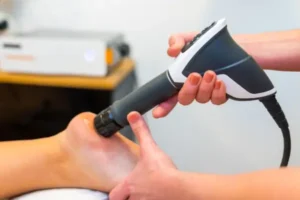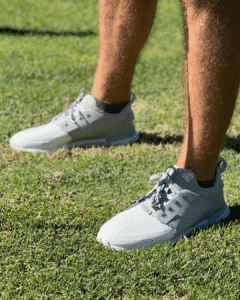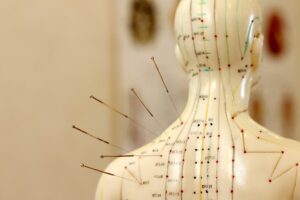Choosing a shoe can be difficult, especially when it comes to exercise. There are many factors that can influence the type of shoe we choose such as:
- foot shape, brand of shoe, walking & running style, form of exercise
If you find yourself getting pain or discomfort when walking or exercising in the following body parts
- Planter fascia, foot, toes, heel, calf, knee, hip, or low back
There is a good chance you may be wearing the wrong shoe OR the shoe needs to be modified for your feet.
Although there has been a shift in shoe design in the last 5-10 years due to foot mechanics research most traditional shoes do not support natural foot mechanics. This is due to a modernized design of style which creates a narrow toe box. This inhibits natural foot mechanics in a few ways.
Imagine you’re at the beach walking on the sand or in the yard walking on the grass barefoot, we feel the sand and grass between our toes and as we put weight over our foot and push off, our toes spread apart before we push off. With most shoes a narrow toe box prevents this and causes or toes to compress up against each other. This can change toe off angle which resultantly can increase shear forces through the knee and hip which over time leads to dysfunction.
Continuing off the last point, most formal shoes or dress shoes and women’s heels have a heel lift which causes the forefoot to drop, respectively. A raise as little as 2-5cm increase in heel lift shortens the Achilles tendon and prevents the foot from naturally flexing. At this heel elevation shear forces increases through the forefoot and knee up to 23% increase in body weight. If we were to increase that to a 7.5 cm heel, which can be quite a common height, the forces shoot up to 76% body weight felt through the foot and knee. These are quite large increases in forces that the lower limb will not withstand for long.
Long term affects that can come from such dysfunction are:
- Metatarsalgia
- Morton’s Neuroma
- Planter fasciitis
- Bunion
- Runner’s knee or Patellar femoral pain syndrome
- Low back-Facet & Sacroiliac irritation
Choosing a Shoe Right for You
Three main shoes we typically are looking at
- Maximal cushioned shoe
- Neutral of typical cushioned shoe
- Minimalist shoe
Minimalist shoes have become a more popular choice for exercise, and I do advocate for this type of shoe, in most circumstances and for day to day movement. However, they may not always be appropriate as I will high light. Minimalist shoes usually have a wide toe box and as the name suggests “minimal” cushion support to allow for the foot to act naturally while walking and the toes to splay as they should. These shoes also have minimal to zero heel raise which takes pressure off the knee and changes gait from a heel strike to a mid to forefoot strike. This type of strike allows that calf to absorb more forces but because of this an increase in stress on the shin, achilles and calf can occur increasing the chances of overuse injury during long periods of running or walking.
In the case of running we may want to consider a shoe with a typical or maximal cushioned support depending on the individuals foot shape and ground strike particularly if you are a heel striker. A maximal shoe has quite large mid foot support with a slight slope towards the toe. And although this shoe may seem like a good option for running the evidence is mixed and minimal. The idea is they reduce forces through the foot and Achilles but still seem to aggravate what they are helping along with the knee. My advice would be to start on a typical/neutral running shoe first before jumping to a maximal.
Some other factors we must consider are as follows, which becomes tricky
- Shoe manufacturer
- Density of sole
- Heel width & counter
- Sole geometry
- Heel width
- Shoe weight
Regardless of shoe, we should always still seek out one that has a wide enough toe box for our feet. It is important to have your foot mechanics assessed along with gait and running style as this will help decide which shoe is best for you with the type of exercise being done.
At the end of the day every foot is different! Therefore some styles that are good for one may not be so for another. Therefore, it is important to always ask a professional with the biomechanical background that can help choose the right shoe for you!
References:
J.J. Hanntgan and C.D. Pollard. Differences in running biomechanics between a maximal, traditional, and minimal running shoe. Journal of Science and Medicine in Sport 23(2020) 15-19
E. James.2014. Born to walk: Myofascial Efficiency and the Body in Movement.





